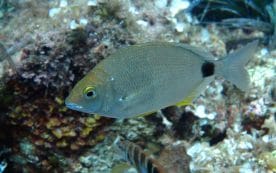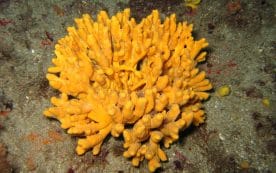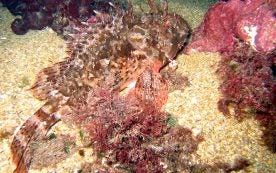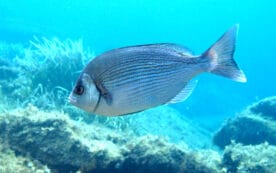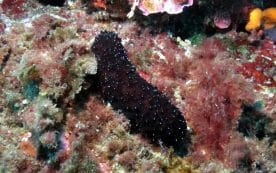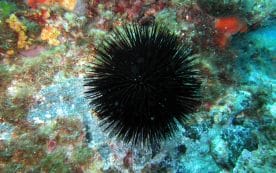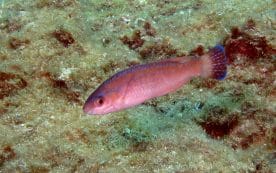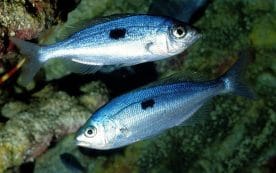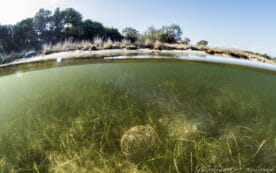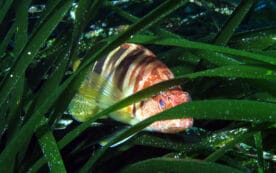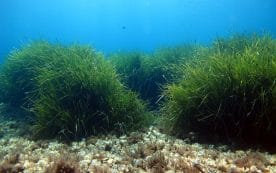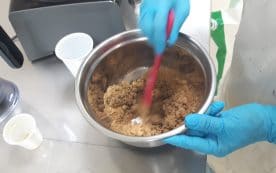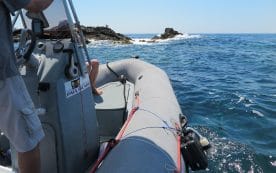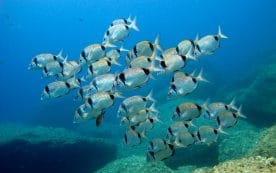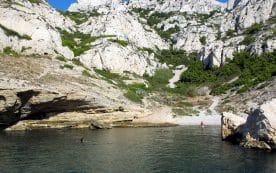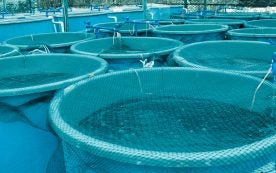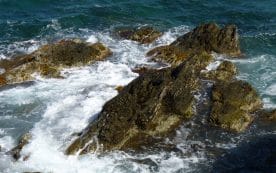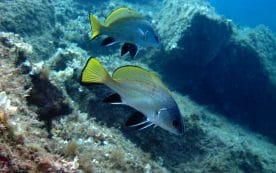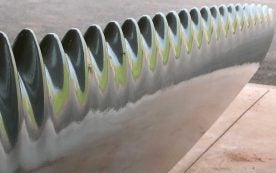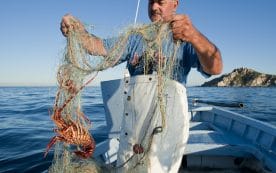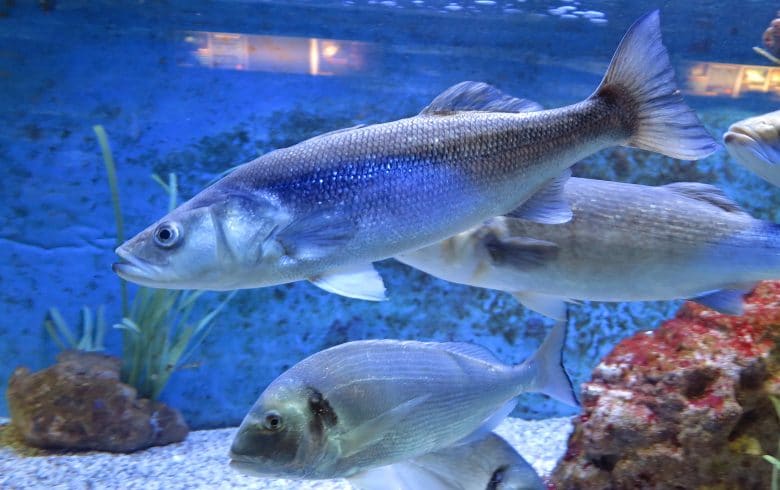
Did you know ?
The largest specimens can measure one metre long and weigh nearly 10kg!
Its slender body is usually silvery grey with a darker back. It has two dorsal fins that are almost confluent. With its torpedo-shaped body, it is a quick swimmer and hence a formidable predator, feeding on fish and cephalopods. Young sea bass often live in schools whereas the adults are more solitary. It is a delicious food fish and often bred in fish farms. It is found down to depths of 100m over all types of seafloors and also in brackish water in the Mediterranean, the Black Sea and from Norway to Senegal in the Atlantic.
Phylum: Vertebrates
Class: Osteichthyes
Order: Perciformes
Family: Moronidae
Scientific name: Dicentrarchus labrax
French: Loup ou Bar
Spanish: Lubina
Italian: Branzino
German: Wolfsbarsch

